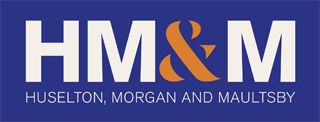The part of the new Tax Cuts and Jobs Act (“TCJA”) about which we at HM&M have received the most inquiries is the new “pass-through” deduction provided by Section 199A of the Internal Revenue Code. Section 199A is in effect for years from 2018 through 2025. The intense interest makes sense for a couple of reasons. First, “pass-throughs” – sole proprietorships, S-corporations, partnerships and limited liability companies taxed as partnerships – account for more than 90 percent of U.S. businesses, according to the Dallas Morning News. Providing tax advice to and tax preparation services for pass-throughs is certainly a large part of our firm’s practice. Second, new Section 199A is one of the most complex and confusing parts of the TCJA. The statutory language raises many questions for which there is no authoritative guidance.
It is likely that Section 199A will provide substantial tax benefit to many owners of pass-throughs. In an optimal situation, this deduction can drop the potential top income tax rate on pass-through income from a maximum of 37% to a maximum of 29.6%. In this paper, we offer to you a brief introduction to this new pass-through deduction.
The pass-through deduction is generally equal to 20% of the “qualified business income” (“QBI”) from a partnership, S corporation, or sole proprietorship, defined as the net amount of items of income, gain, deduction, and loss with respect to the trade or business of the pass-through. The deduction can be taken by individuals, estates and trusts.
The trade or business must be conducted within the U.S. to qualify, and specified investment-related items are not included, e.g., capital gains or losses, dividends, and interest income (unless the interest is properly allocable to the business). The trade or business of being an employee does not qualify. Also, QBI does not include reasonable compensation received from an S corporation, or a guaranteed payment received from a partnership for services provided to a partnership’s business.
The deduction is taken “below the line,” i.e., it reduces your taxable income but not your adjusted gross income. However, it is available regardless of whether you itemize deductions or take the standard deduction. In general, the deduction cannot exceed 20% of the excess of your taxable income over net capital gain. If combined QBI is less than zero, it is treated as a loss from a qualified business in the following year.
Rules are in place to deter high-income taxpayers from attempting to convert wages or other compensation for personal services into income eligible for the deduction.
These rules involve “thresholds,” i.e. taxable income of over $157,500 ($315,000 for joint filers). If your taxable income is at least $50,000 above the threshold, i.e., it is at least $207,500 ($157,500 + $50,000), all of the net income from a “specified service trade or business” is excluded from QBI. Joint filers would use an amount $100,000 above the $315,000 threshold – $415,000. For taxable incomes that are between the threshold amounts and the $207,500/$415,000 amounts, the exclusion from QBI of income from specified service trades or businesses is phased in. Specified service trades or businesses are trades or businesses involving the performance of services in the fields of health, law, consulting, athletics, financial or brokerage services, or where the principal asset is the reputation or skill of one or more employees or owners. Engineering and architectural services are not considered specified service trades or businesses. (Good lobbyists and a bit of precedent!)
Additionally, for taxpayers with taxable income above the thresholds, there is a limitation on the amount of the deduction that is based either on wages paid or wages paid plus a capital element. If your taxable income is at least $207,500 ($415,000 for joint filers), your deduction for QBI cannot exceed the greater of (1) 50% of your allocable share of the W-2 wages paid with respect to the qualified trade or business, or (2) the sum of 25% of such wages plus 2.5% of the unadjusted basis immediately after acquisition of tangible depreciable property used in the business (including real estate). For taxable incomes that are between the threshold amounts and the $207,500/$415,000 amounts, a phase-in of the limitation applies.
Other limitation adjustments may apply in certain circumstances, e.g., for taxpayers with qualified cooperative dividends, qualified real estate investment trust (REIT) dividends, or income from publicly traded partnerships.
Obviously, the complexities surrounding this substantial new deduction can be formidable, especially if your taxable income exceeds the thresholds discussed above. If you wish to work through the mechanics of the deduction, with particular attention to the impact it can have on your specific situation, please contact your HM&M tax advisor.
Latest Blog
The landscape of gift and estate tax planning is experiencing significant shifts, with the upcoming 2026 sunset looming ...
Are you planning to make a Qualified Charitable Distribution (QCD) in 2024? Yes? Then read on … A ...
Please refer to the list below for some changes that will be made for 2023 v 2024. Bonus ...
HM&M Updates
Last month, Senior Manager, Pearl Balsara was invited to speak at the 2023 FPA DFW Annual Conference in ...
We are pleased to announce the winners of the 2022 HM&M Excellence Awards. Ronna Beemer, Keith Phillips, and ...
Huselton, Morgan and Maultsby is composed of a spectacular team of individuals. During our annual What’s Happening Meeting, ...









